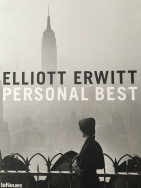This book to me has so much meaning. It is written about a home, less than 800 yards from where I live. I believe I know some of the characters from their descriptions and the many pubs the book constantly refers to are all my locals. Therefore I am writing this book from a place of bias before I start.
The book is a winner overall, even though the author originally and incorrectly places people “like me” as an aggressive racist. That was his initial, uneducated, totally biased, overly privileged, blinkered and typically Tory view of the residents of S66. There is no wonder we changed his view point. I drive past the hour he rented every time I go out in my car and it makes me smile.
Baggini is a “southern”philosopher and the purpose of the book was to find somewhere that is typical of England and yes, that is right where I live. We have a mixture of wealthy, poor – young, old, -urban, countryside, – working, unemployed and retired. We are very typical and average!
The book follows his experiences and how his search, for the typical progresses. His musings at the Travellers (one of many village pubs) makes me grin from ear to ear every time I think of it.It charts all of his experiences in S66. (where he spent considerable time renting on Flash Lane!) The book takes him on journeys to the local Bookies, Doncaster racecourse and to watch the Sheffield Steelers, the ice hockey team.
His view over time mellowed and he began to realise that even if racist language is used in everyday conversations, this does not make the person using this language a racist, perhaps slightly unethical/un-wordlywsie, but not racist.
This book, although not written as a photography book, gives an insight into people’s thoughts and perceptions which can assist with the thought process when making images.
I would recommend every one from every town read this. Great insight into “Everytown” in England.

